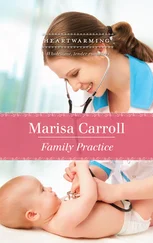Early researchers suggested that personal psychological growth is essential for transcending adversity and cultivating coping and resiliency skills during extraordinary stressful and traumatic events (Csikszentmihalyi & Nakamura, 2002; Siebert, 2005; Tedeschi & Calhoun, 2004; Updegraff & Taylor, 2000). The construct of resiliency encompasses other concepts, such as hardiness, resourcefulness, and mental toughness, which serve as coping resources for individuals in crisis (Schneider Corey & Corey, 2021). In the aftermath of a crisis, disaster, or trauma, it is vital that survivors draw on strengths and coping resources that perhaps were not recognized by themselves and others before the critical event (Stebnicki, 2017).
Over the past several years in the United States, there has been a resurgence of interest in studying the mental, behavioral, and psychosocial aspects of pandemic viruses. Emerging infectious diseases remain a top priority and challenge for public health officials engaged in the business of human survival (Germani et al., 2020; Morens et al., 2008; Pappas et al., 2009; Reyes et al., 2013; Wang et al., 2020). Today’s epidemiological and psychological concerns with viral infections may have arisen with the 2013–2016 outbreak of West African Ebola virus disease. A resurgence of the Ebola virus was observed in December 2013, when an 18-month-old boy from the rural forested region of southeastern Guinea was suspected of having been infected by bats. The Ebola pandemic was the largest, longest, deadliest, and most geographically expansive disease outbreak in the 40-year interval since Ebola was first identified in 1976 (Shultz et al., 2016). At the height of this disease outbreak in 2014, the Ebola virus spread globally. It coincided with the CDC training 6,500 U.S. health care workers and 24,655 other health care workers in West African countries of Guinea, Liberia, Sierra Leone, and Mali (CDC, 2019a). In 2014, the CDC reported 11 cases of travel-related Ebola virus in the United States. Fortunately, the spread and transmission of Ebola virus infection in the United States have not reached the levels of the COVID-19 virus.
The Ebola virus is one example of a virus with the potential to morph into a lethal viral contagion and become a pandemic. The pathways and transmission of Ebola and many other viruses, such as COVID-19, are of paramount concern for epidemiologists and world health care organizations tracing, tracking, and analyzing viral DNA to treat these highly infectious diseases and develop vaccines to prevent their spread. Unfortunately, the counseling, psychology, and disaster mental health fields have not kept pace with the virologists, epidemiologists, and other medical specialists who study viral contagions. Thus, it is essential that researchers gain a complete understanding of the mental, behavioral, and psychosocial risk and resiliency factors associated with pandemic viruses. A greater understanding is needed to treat individuals affected by the unique characteristics of a pandemic disaster.
Coping, Risk, and Resiliency as They Apply to the PRRC Theoretical Model
The impressive research on coping, risk, and resiliency is worthy of a book on its own. However, these constructs have been sparsely applied since the COVID-19 pandemic began. Thus, for the purpose of describing the PRRC theoretical model, I offer some key applications and definitions of these constructs.
Coping strategies and stress appraisal have been studied for decades by classical theorists and stress researchers (e.g., Frankl, 1959; KabatZinn, 1990; R. S. Lazarus, 1999; R. S. Lazarus & Folkman, 1984; Sapolsky, 1998; Selye, 1950). The literature on how individuals cope with a variety of medical, physical, and psychological conditions is quite substantial. Coping, as it relates to persons with chronic illness and disability, is a psychological strategy used to decrease, modify, or diffuse the impact of stressful and critical life events (Livneh & Antonak, 2018). The defining characteristics of coping include how people (a) exhibit and experience coping as a state or trait; (b) control or manipulate their coping strategies; (c) organize their coping style around a range of internal and external characteristics; and (d) respond affectively, cognitively, and/or behaviorally.
Individuals exhibit a range of healthy and unhealthy coping strategies to lessen the impact of extraordinary stressful and traumatic events. Some examples of coping strategies include denial, regression, compensation, rationalization, and diversion. Falvo and Holland (2018) described coping strategies in relation to persons with chronic illness and disability as subconscious mechanisms for dealing and coping with the stress of their medical/physical condition. Thus, the intention of coping is natural. It is a means for people to reduce their levels of stress and anxiety. Coping styles are particularly relevant for individuals dealing with medical, physical, psychological, public health, and environmental impacts of the coronavirus pandemic.
It is difficult to provide a parsimonious definition of risk-taking as it relates to phases of a pandemic virus. This is because risk-taking is a multidimensional construct that involves thoughts, feelings, cognitions, experiences, and behaviors. It also involves risk-taking attitudes and behaviors that determine a range of decision-making strategies to safely navigate complex, uncertain, and dangerous activities (H. F. Chan et al., 2020). There is limited empirical evidence of psychologically based risk-taking behaviors measured during the COVID-19 pandemic. However, it is essential to understand that risk-taking is a multifaceted construct that is measurable and observable by oneself, others in the environment, and mental health practitioners. The intersection of agreement of these three observers (self, others, professionals) involves a complex equation defining What is risky behavior? The construct of risk-taking during the COVID-19 pandemic shares many characteristics and long-term implications for mental health with addictive and behavioral health concerns (Zvolensky et al., 2020). From a mental health perspective, risky patterns of behavior (i.e., suicidality, depression, anxiety, posttraumatic stress, substance use disorders) are well defined by diagnostic categories and decision trees in the fields of psychology, counseling, and mental health.
Risk also involves (a) the assessment of a situation, (b) the use of cognitions in the decision-making process, (c) acting on a decision, (d) the influence of neurobiological mechanisms on feelings and emotions, and (e) the navigation of complex environments associated with risk-taking behaviors (H. F. Chan et al., 2020). Regardless of how simplistic or complex the decision to take a risk is, the psychological adjustment and adaptation involved in living during phases of a pandemic virus creates unrelenting stress, anxiety, and fear for many Americans. Thus, the impact of taking risks during a pandemic virus may not be immediately known. For example, leaving your home to go shopping, go to work, and/or attend school may create apprehension and conflict between yourself, your family members, your environment, and society. Social, interpersonal, and intimate relationships are particularly strained during a pandemic virus. Risk-taking is inherently involved in maintaining these types of relationships and interactions. Thus, a risk–reward decision-making process occurs as the average American takes daily risks in many different life areas, such as virus hygiene and living intentionally with good medical, physical, mental, and behavioral health.
Risk-taking is indeed multidimensional in nature. There is strong empirical support for the effects that emotions play and the neurobiological consequences of risk-taking behaviors (Kusev et al., 2017). Accordingly, risk-taking is not solely a behavioral response. Rather, it has a mind-body component that propels the individual to action or inaction. For example, several key hormonal correlates act as determinants of risky behavior. We see this in the minirevolution of neuroscience related to veterans responding to combat operational stress and those diagnosed with posttraumatic stress disorders (Stebnicki, 2021a). For example, chronic sustained activation and elevation of cortisol, testosterone, and oxytocin levels have been associated with the modulation of healthy and unhealthy risk-taking behaviors. These hormones influence our cognitive-emotional patterns of behavior during the decision-making process. When the biophysiological markers of posttraumatic stress disorder are measured in the amygdala, the link between associative learning (Schiller et al., 2008) and the expression of other emotions (i.e., anger, sadness) is manifested by a host of mental health conditions (Lin et al., 2017).
Читать дальше












